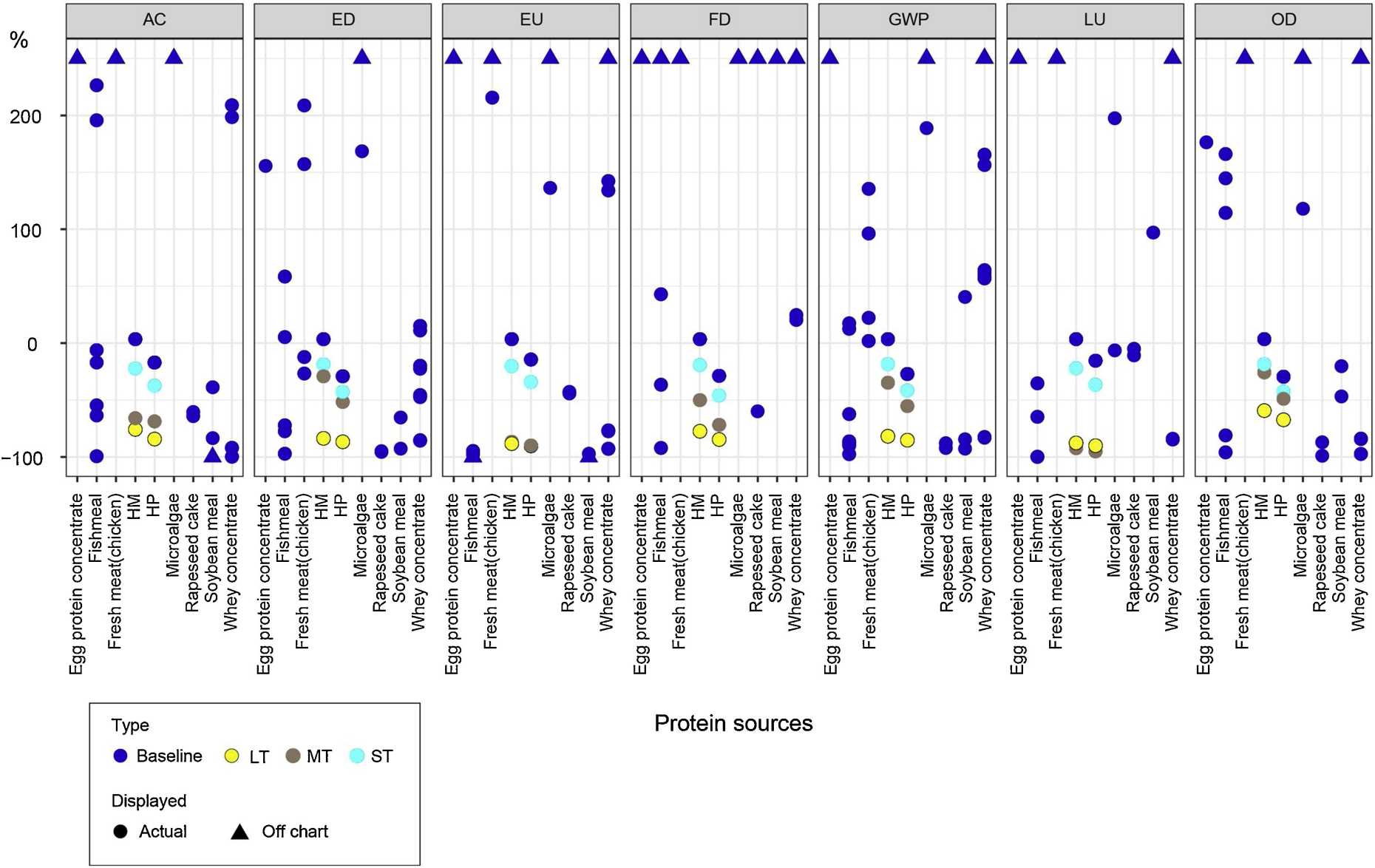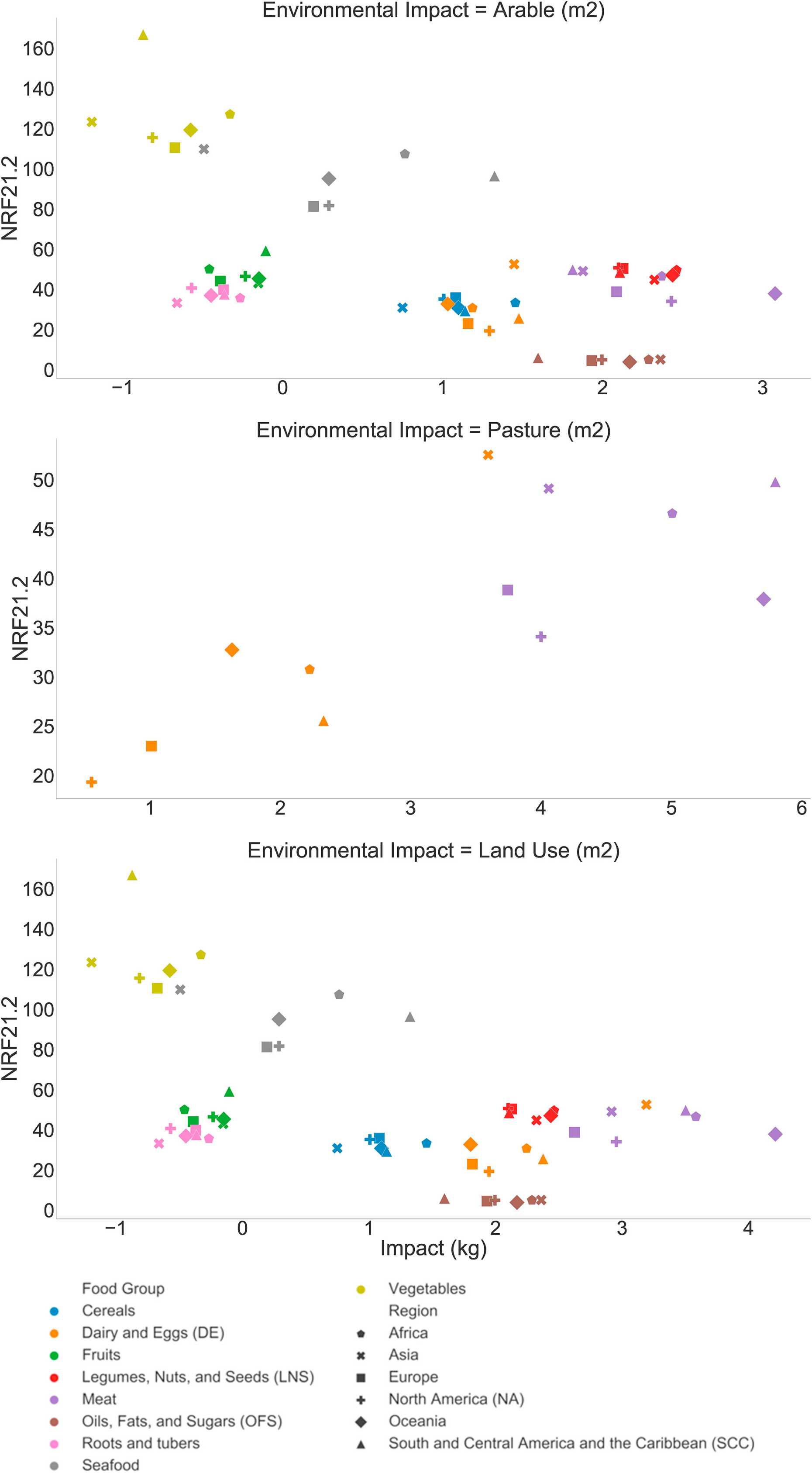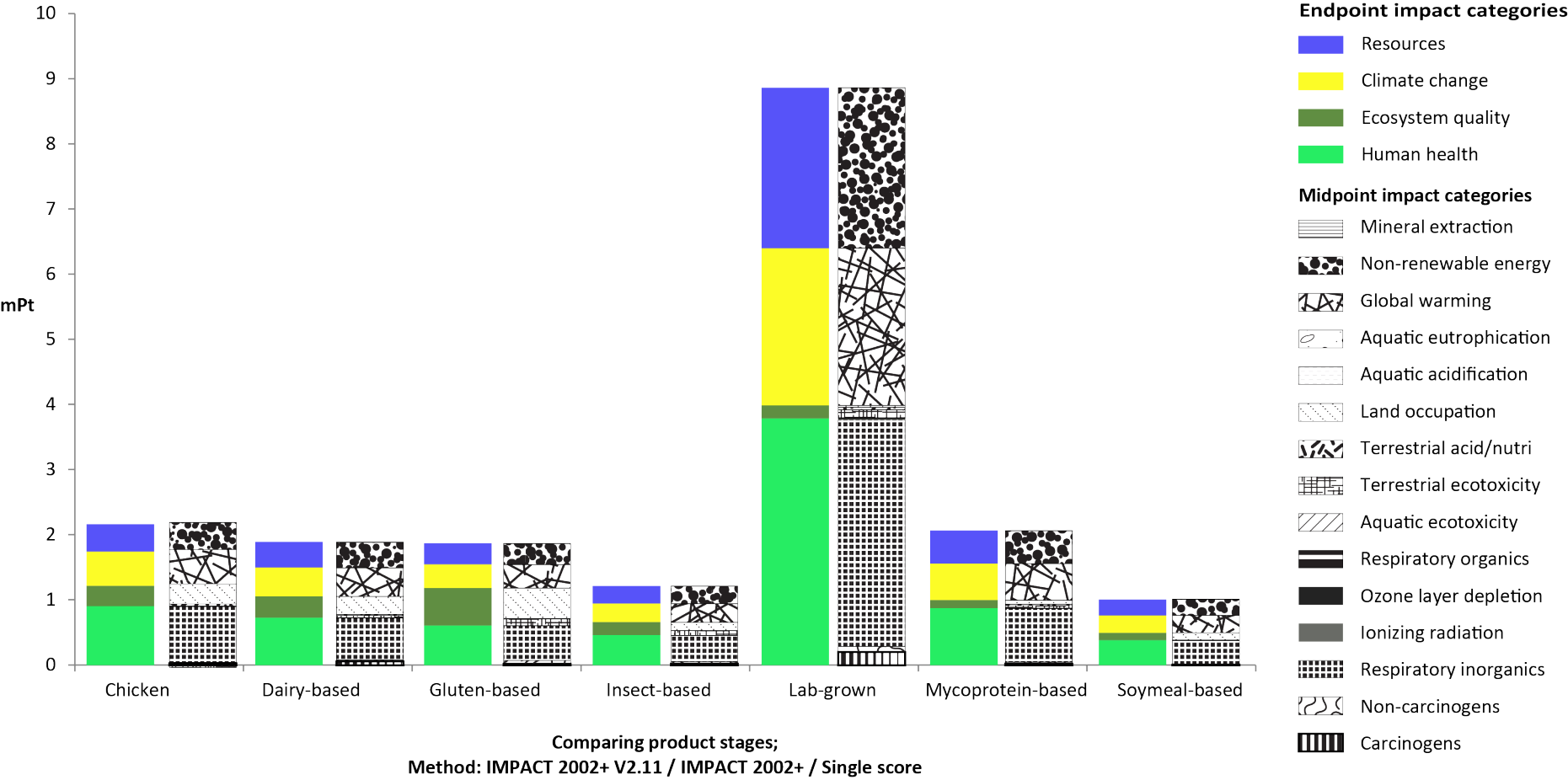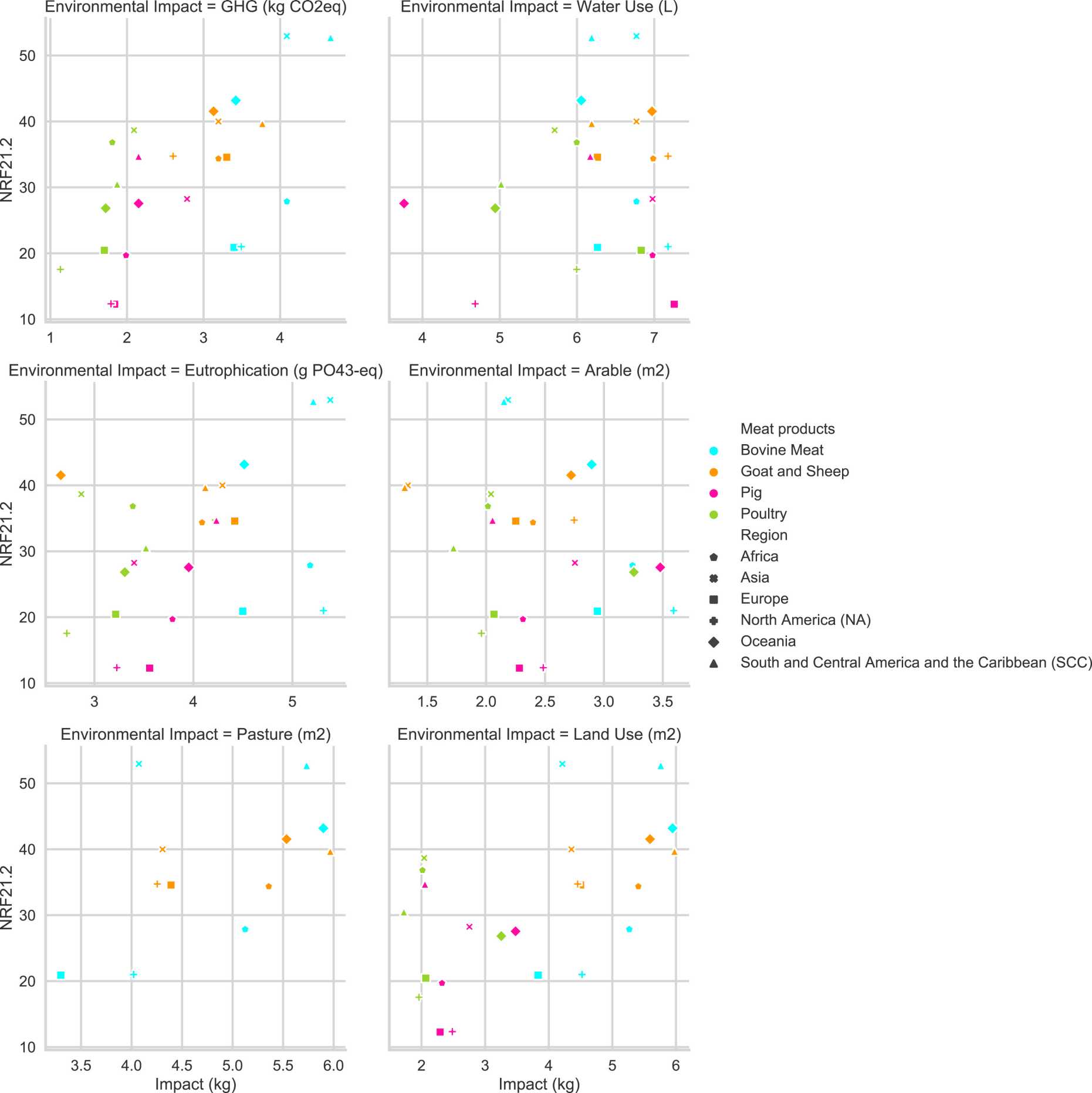Life Cycle Assessment
Food production is among the highest human environmental impacting activities. Agriculture itself accounts for 70–85% of the water footprint and 30% of world greenhouse gas emissions (2.5 times more than global transport). Food production’s projected increase in 70 % by 2050 highlights the importance of environmental impacts connected with production.

Nutritional life cycle assessment integrates nutrition into environmental life cycle analysis to comprehensively account for agri-food sustainability challenges including micronutrient deficiencies, nutrient diversity, and environmental impacts like climate change or freshwater scarcity, when compared to traditional life cycle assessment. We use regionally-explicit nutritional and environmental data at the food product and country levels to calculate environmental impacts, nutritional adequacy (e.g., Nutrient Rich Food Indices), and nutritional diversity (e.g., Rao's Quadratic Entropy). We first discuss various reasons for the differences in nutritional and environmental sustainability metrics for the various food products and countries. We then present nutritionally-invested environmental impacts. Here, because nutritional life cycle analysis is a nascent method, we explore the influence of methodological choice (e.g., capped versus uncapped metrics, energy standardization, contingent versus non-contingent measures) on results. We find using nutritionally-invested environmental impacts change the relative sustainability rankings of foods and countries, regional variability in nutritional profiles and environmental footprints of food products influence results, methodological choice alters nutritional metric scores, and food products can cover nutritional deficiencies in an environmentally-friendly manner. Our study contributes to research on the joint accounting of nutritional and environmental food system outcomes. Green, Nemecek, Smetana & Mathys, 2021

Selected publications
Green, A., Nemecek, T., Smetana S. & Mathys, A. 2021. Reconciling regionally-explicit nutritional needs with environmental protection by means of nutritional life cycle assessment. Journal of Cleaner Production, 127696. external pageDOIcall_made
Green, A., Nemecek, T., Chaudhary, A. & Mathys, A. 2020. Assessing nutritional, health, and environmental sustainability dimensions of agri-food production. Global Food Security, 26, 100406. external pageDOIcall_made
Smetana S., Schmitt, E. & Mathys A. (2019). Sustainable use of Hermetia illucens insect biomass for feed and food: attributional and consequential Life Cycle Assessment. Resources, Conservation & Recycling, 144. 285-296, external pageDOIcall_made
Chaudhary, A., Marinangeli, C.P.F., Tremorin, D. and Mathys A. (2018). Nutritional Combined Greenhouse Gas Life Cycle Analysis for Incorporating Canadian Yellow Pea into Cereal-Based Food Products. Nutrients, 10 (4): 490, Basel: MDPI, 2018. external pageDOIcall_made
Raschio G., Smetana S., Contreras C., Heinz V. & Mathys A. (2017). Spatio-temporal differentiation of Life Cycle Assessment results for average perennial crop farm. Journal of Industrial Ecology. doi:10.1111/jiec.12692. external pageDOIcall_made
Aganovic K., Smetana S., Grauwet T., Toepfl S., Mathys A., Van Loey A. & Heinz V. (2017). Pilot scale thermal and alternative pasteurization of tomato&watermelon juice:An energy comparison and life cycle assessment. Journal Cleaner Production, 141: 514-525. external pageDOIcall_made
Valsasina L., Pizzol M., Smetana S., Georget E., Mathys A. & Heinz V.(2016). Life cycle assessment of emerging technologies: The case of milk ultra-high pressure homogenisation. Journal of Cleaner Production, 142, 2209–2217. external pageDOIcall_made
Smetana S., Palanisamy M., Mathys A. & Heinz V. (2016).Sustainability of insect use for feed and food: Life Cycle Assessment perspective. Journal of Cleaner Production, 137, 741–751. external pageDOIcall_made
Smetana S., Mathys A., Knoch A. & Heinz V. (2015). Meat Alternatives: Life cycle assessment of most known meat substitutes. International Journal of Life Cycle Assessment, 20(9), 1254-1267. external pageDOIcall_made


